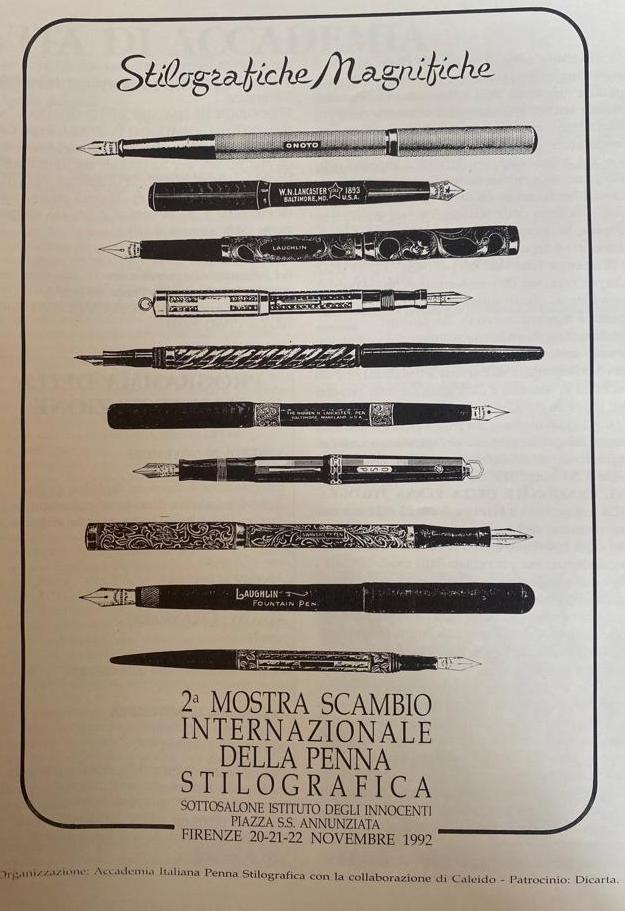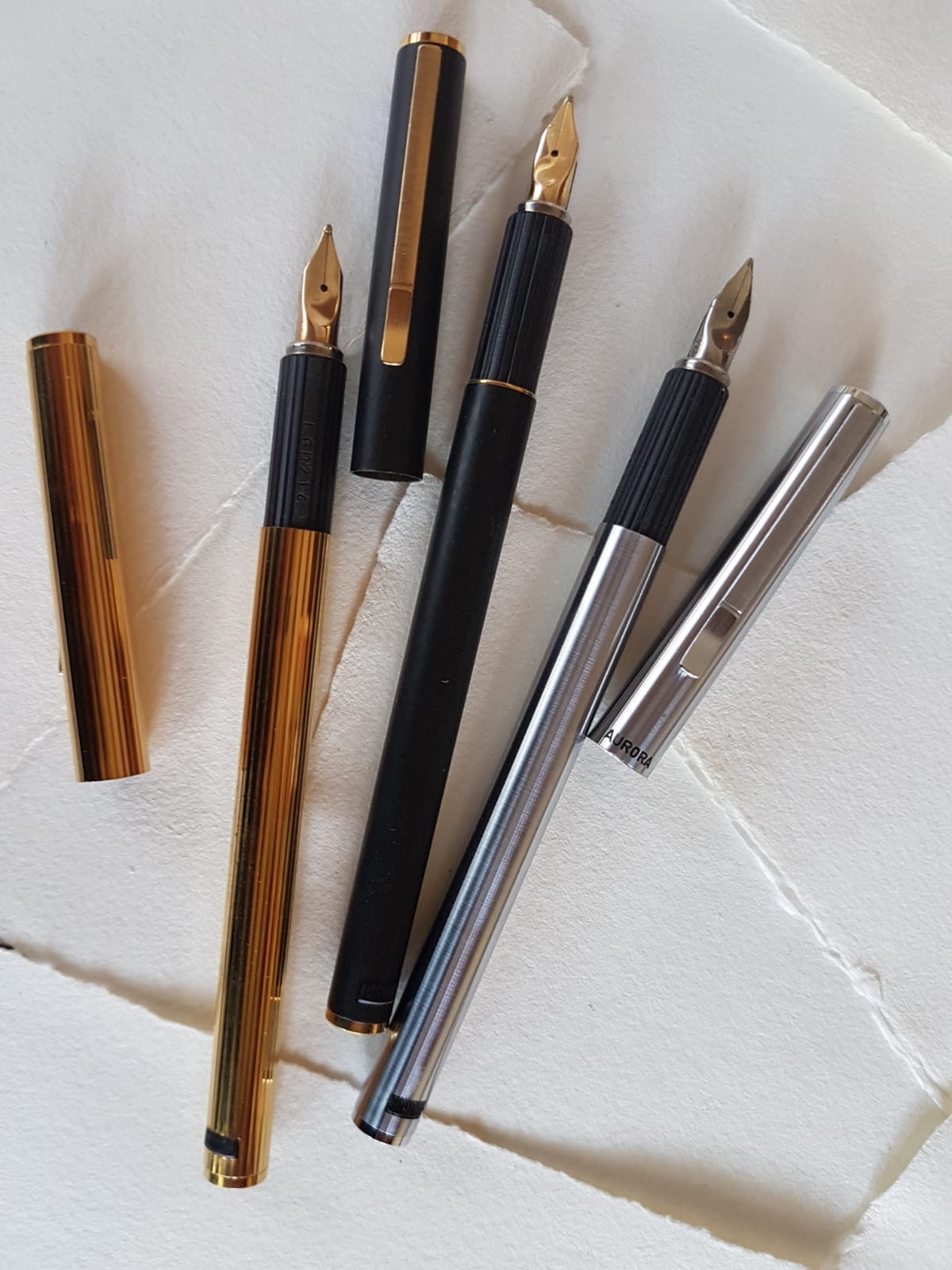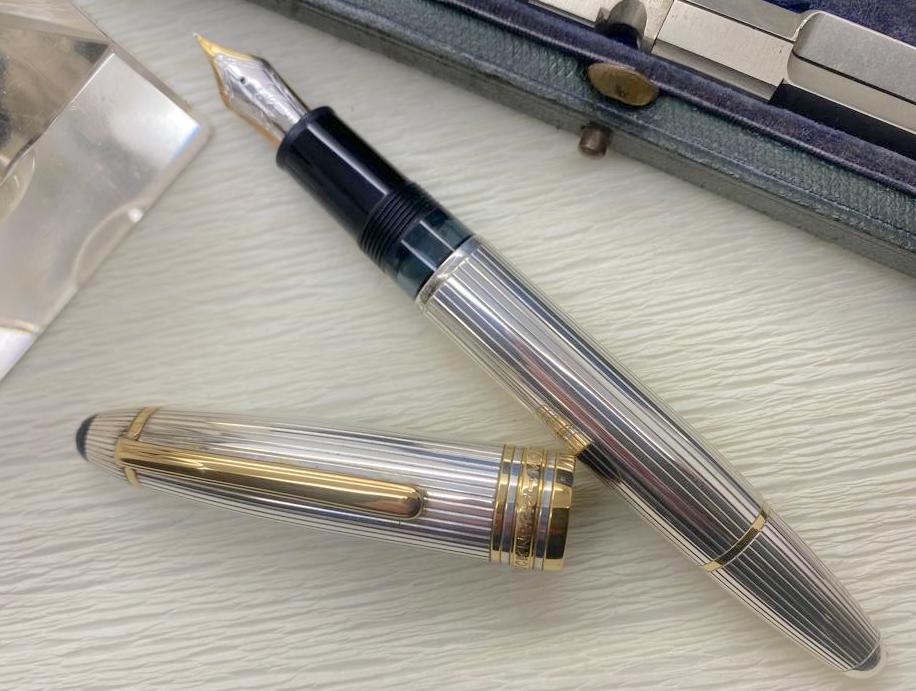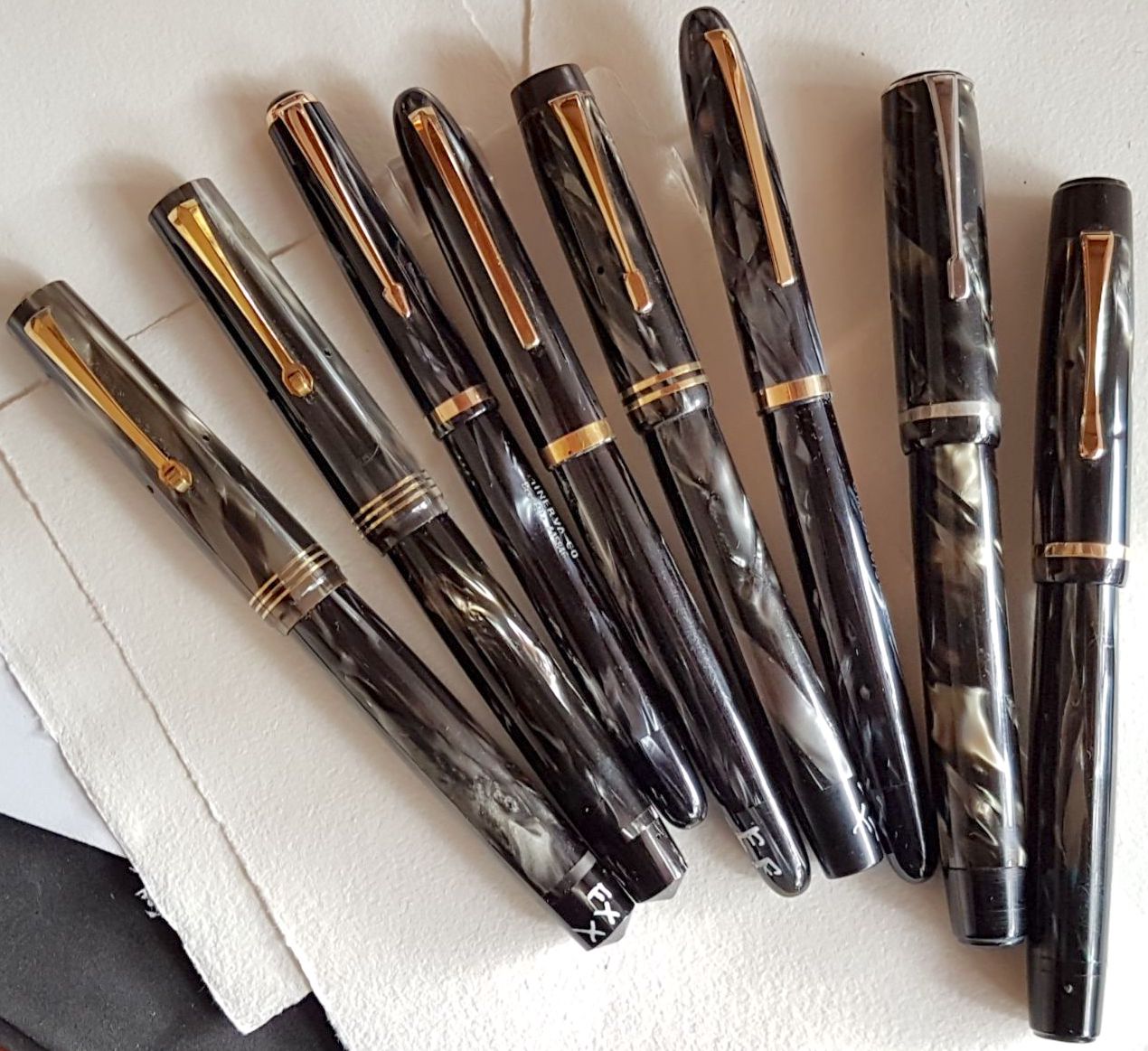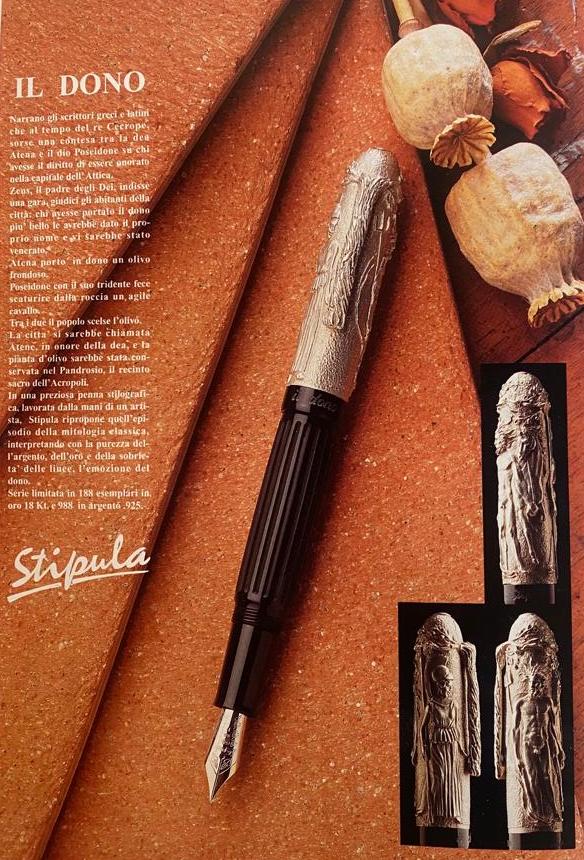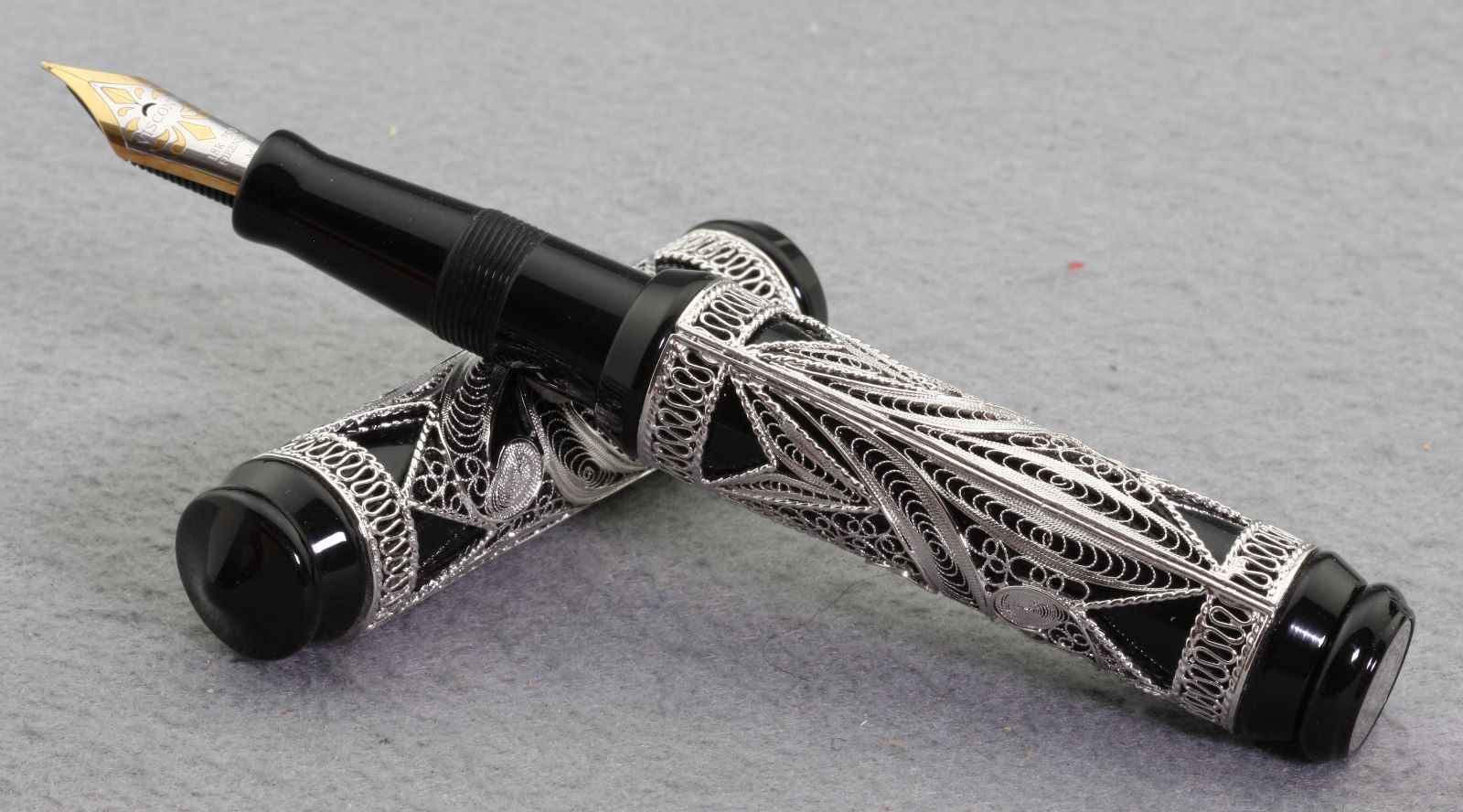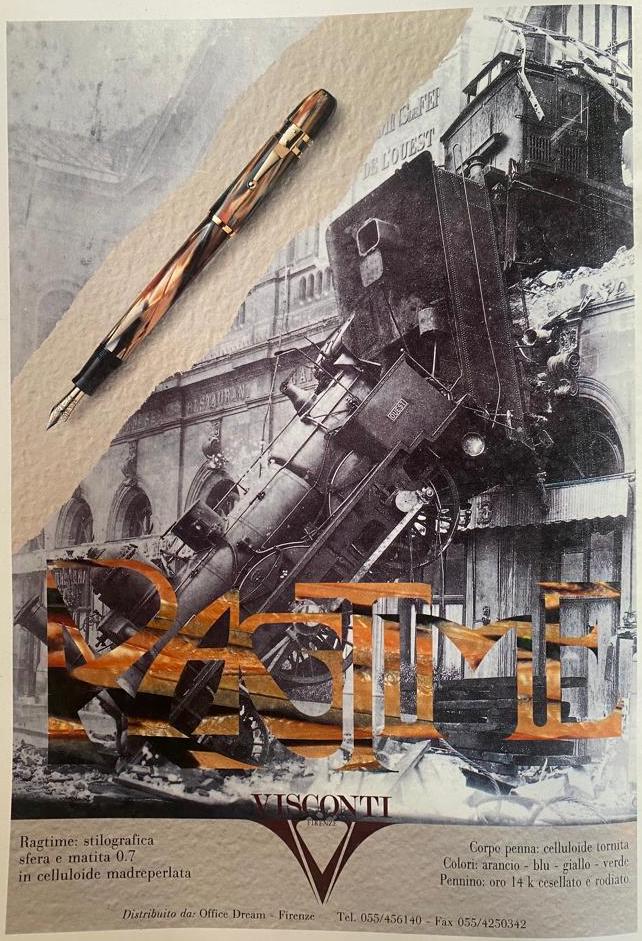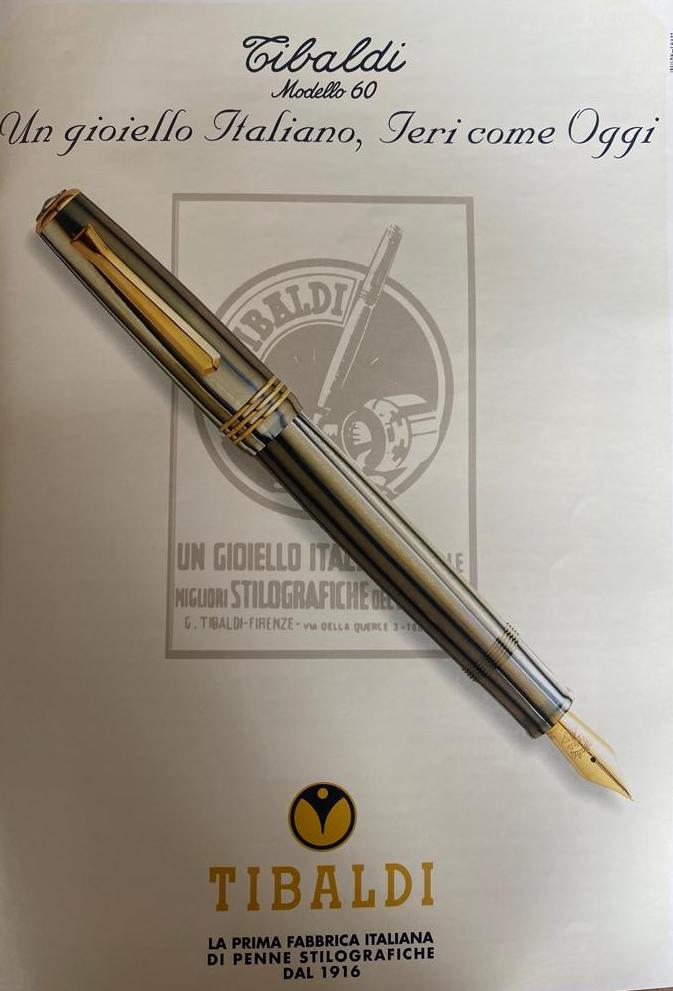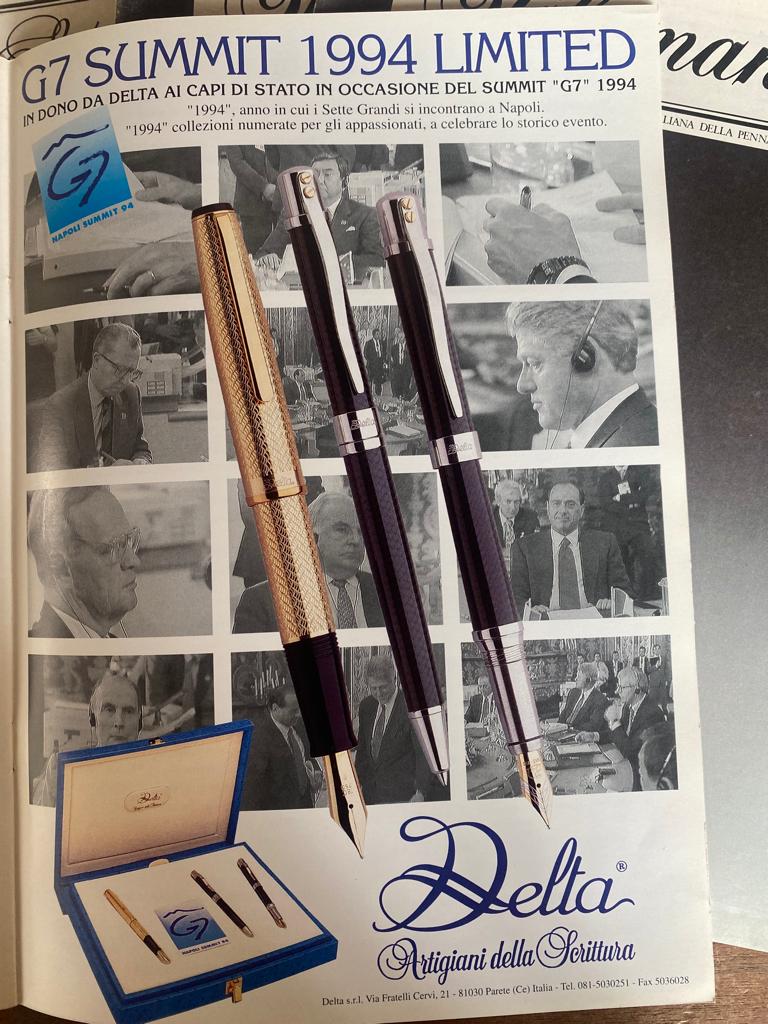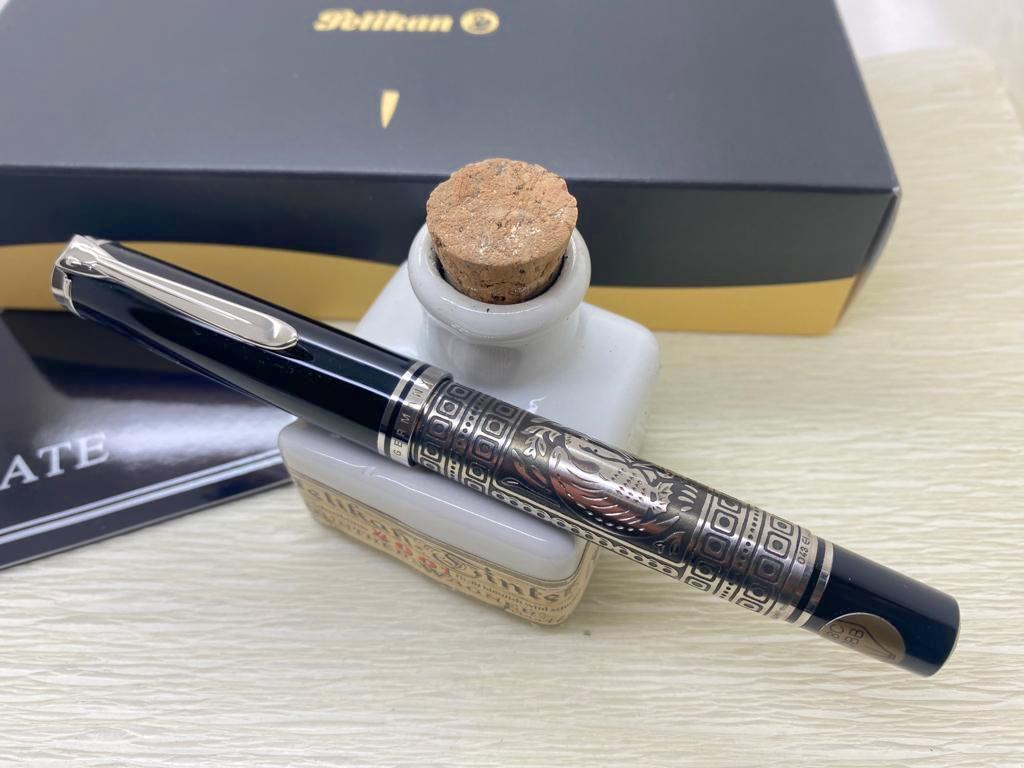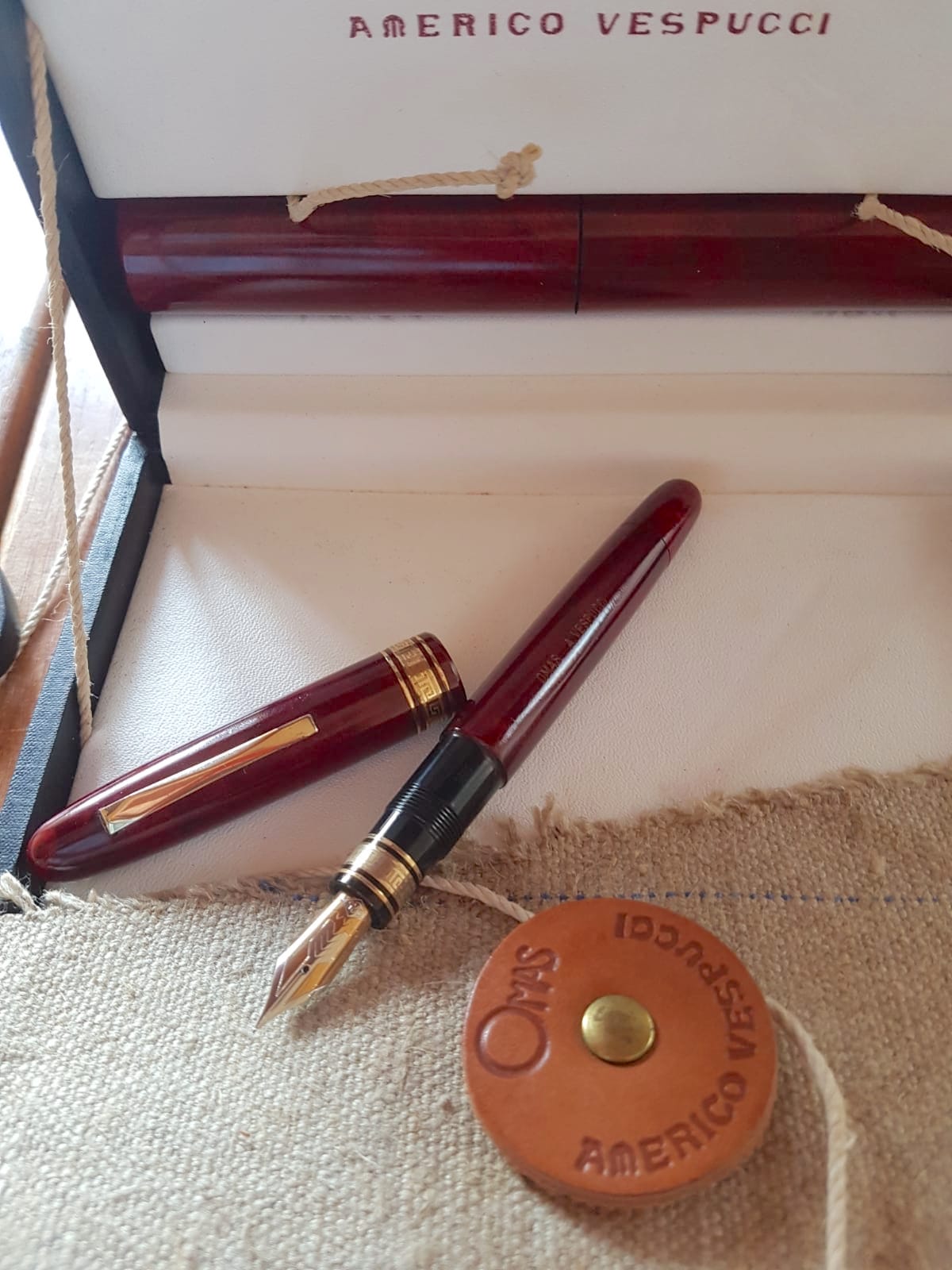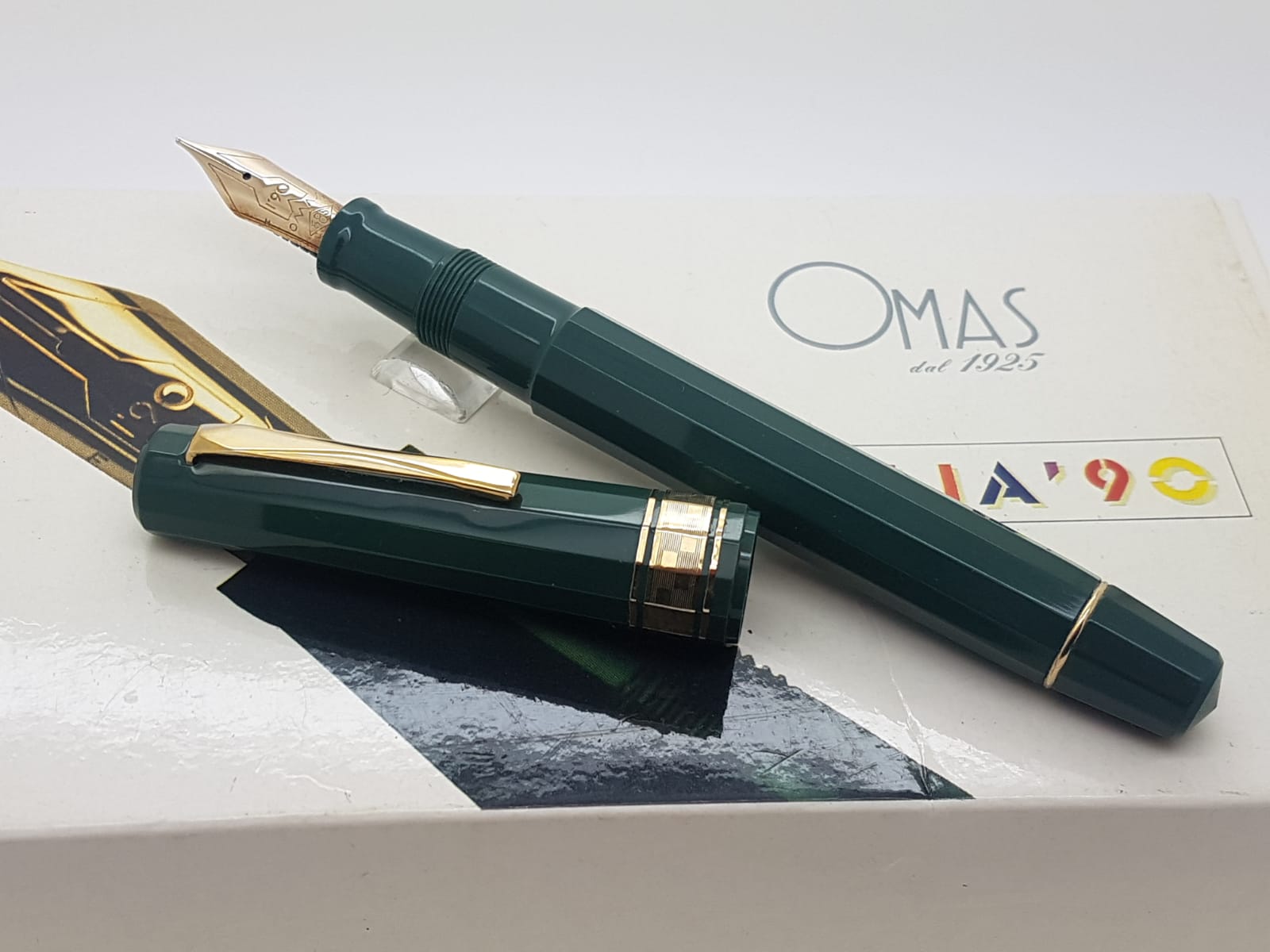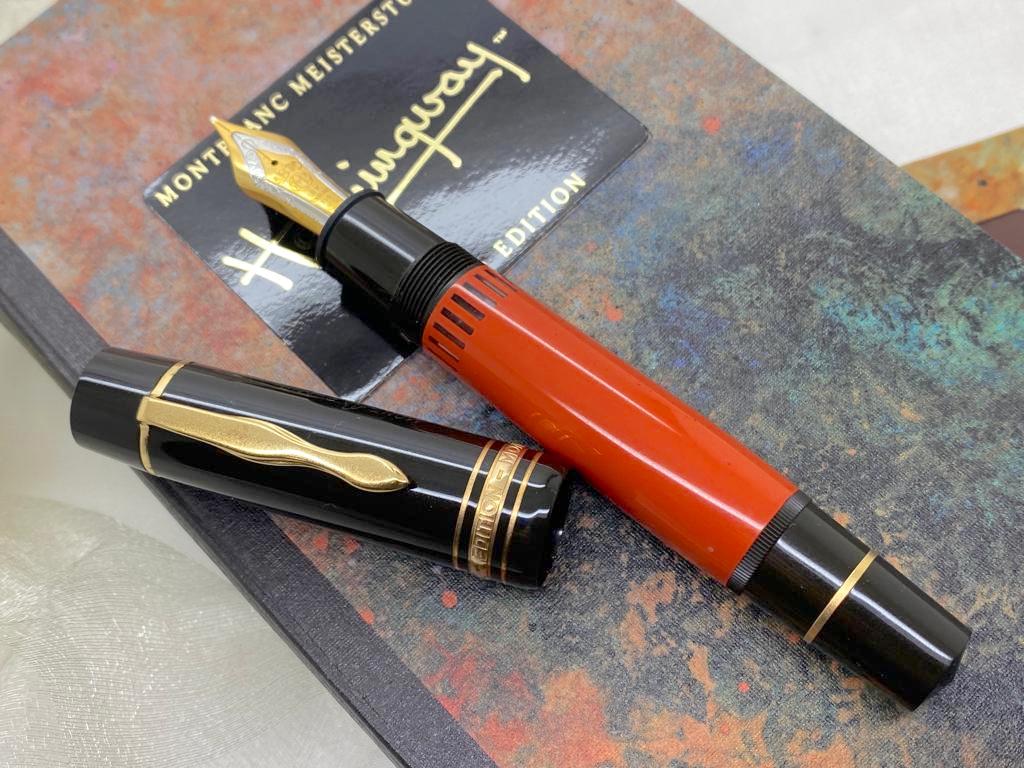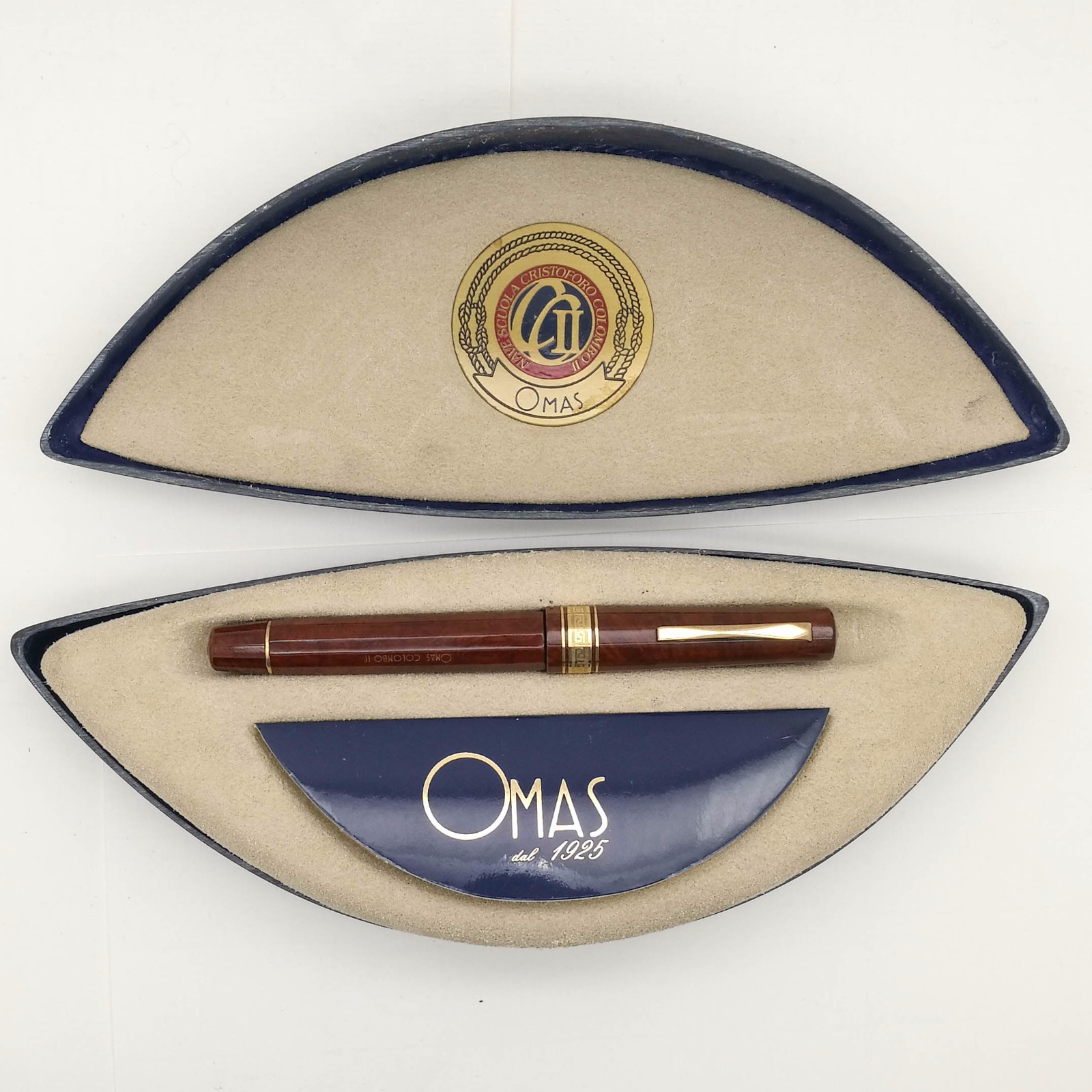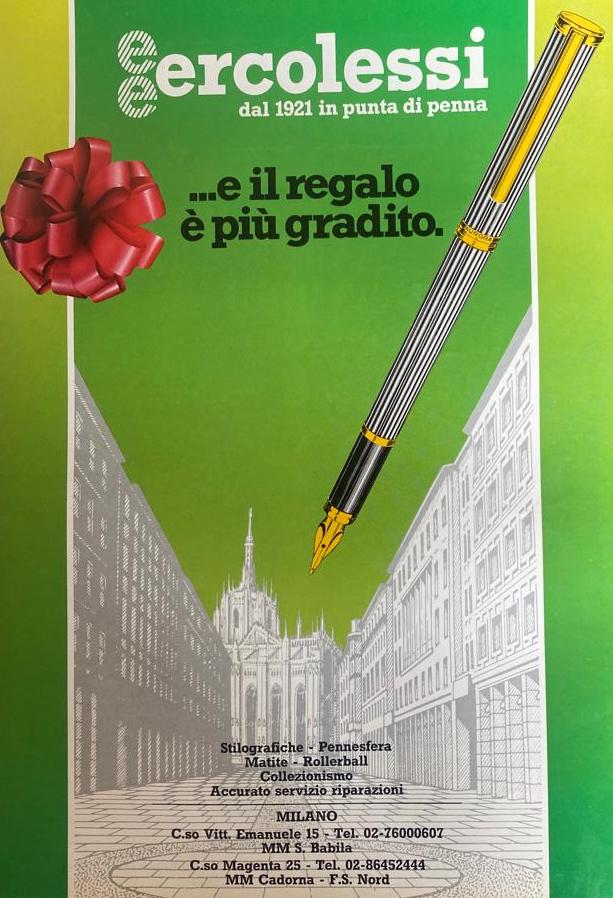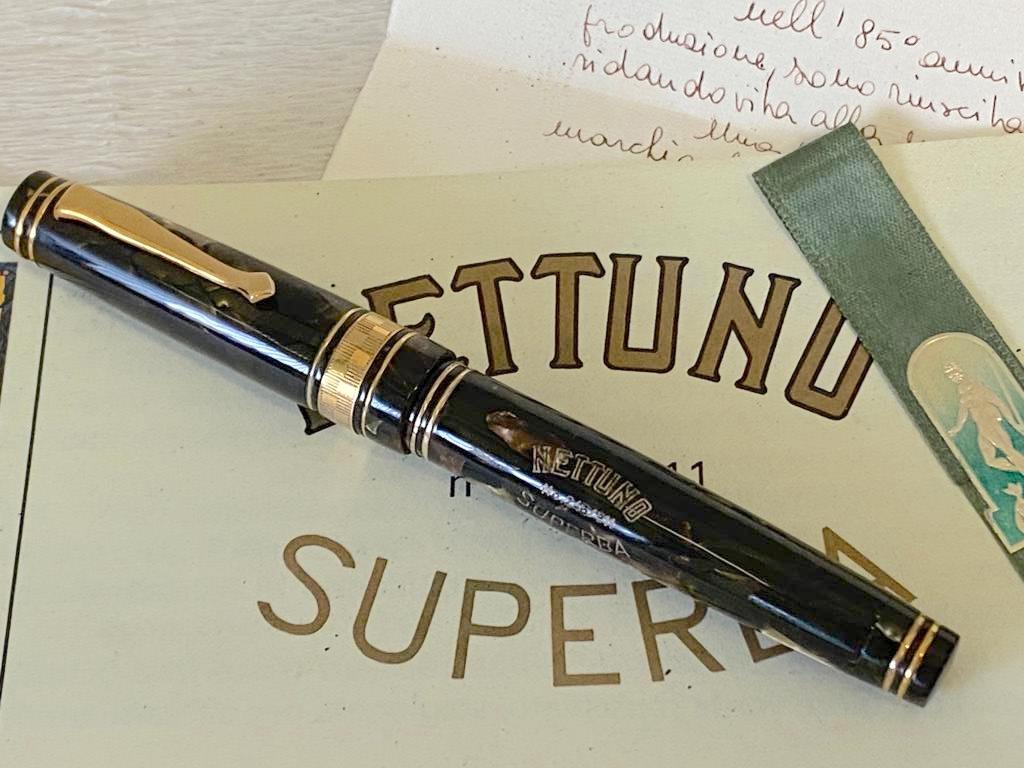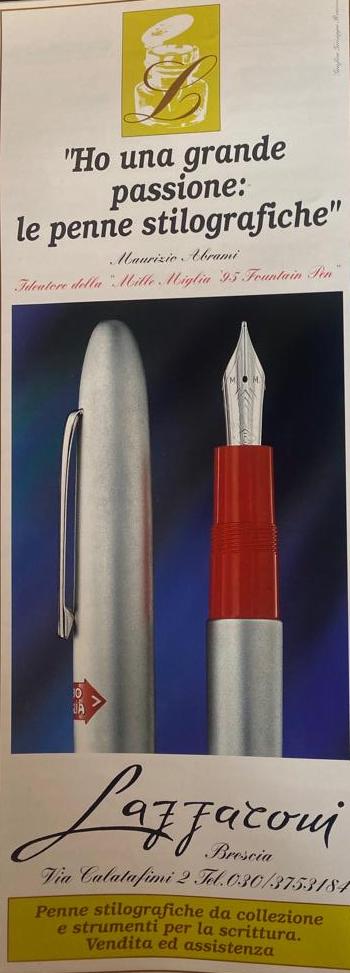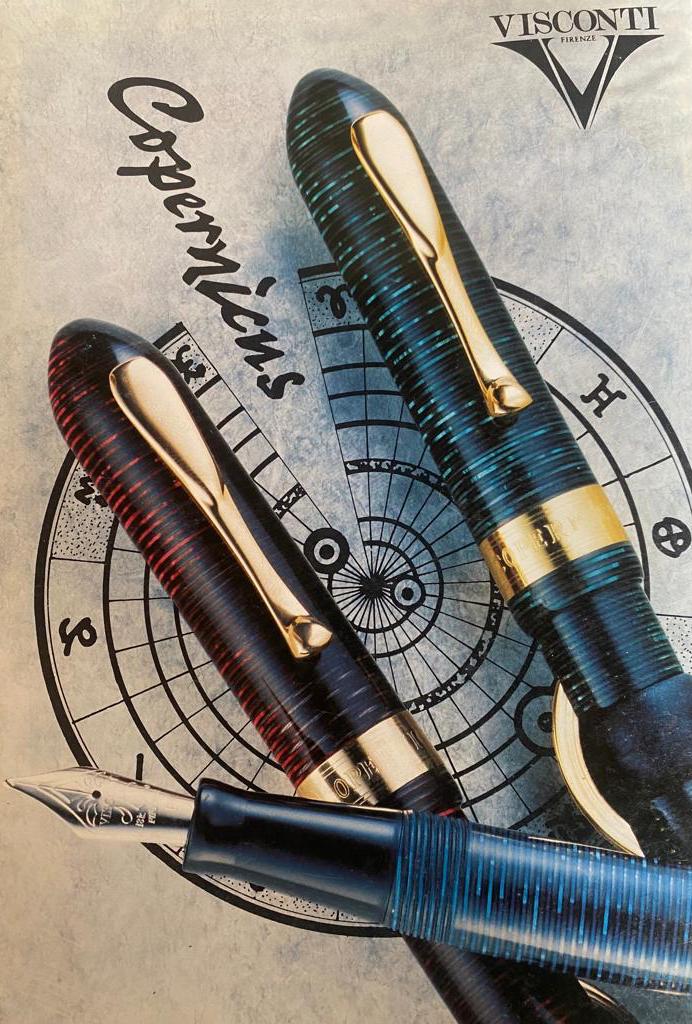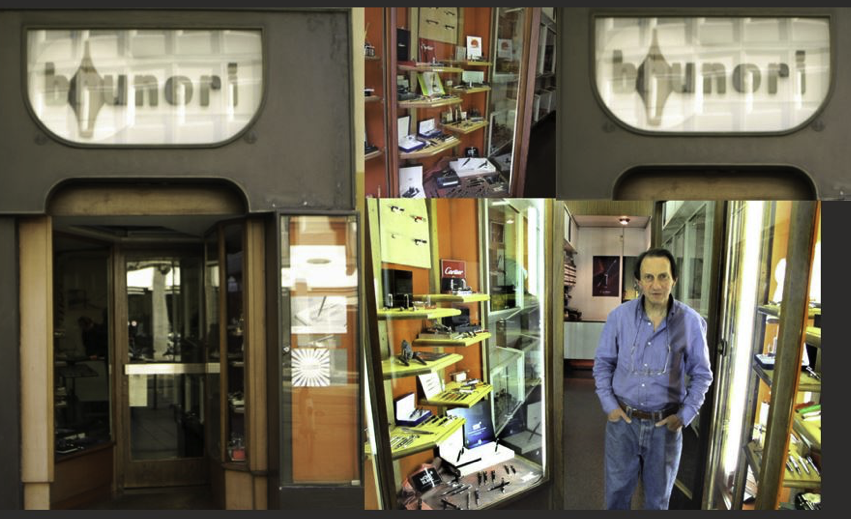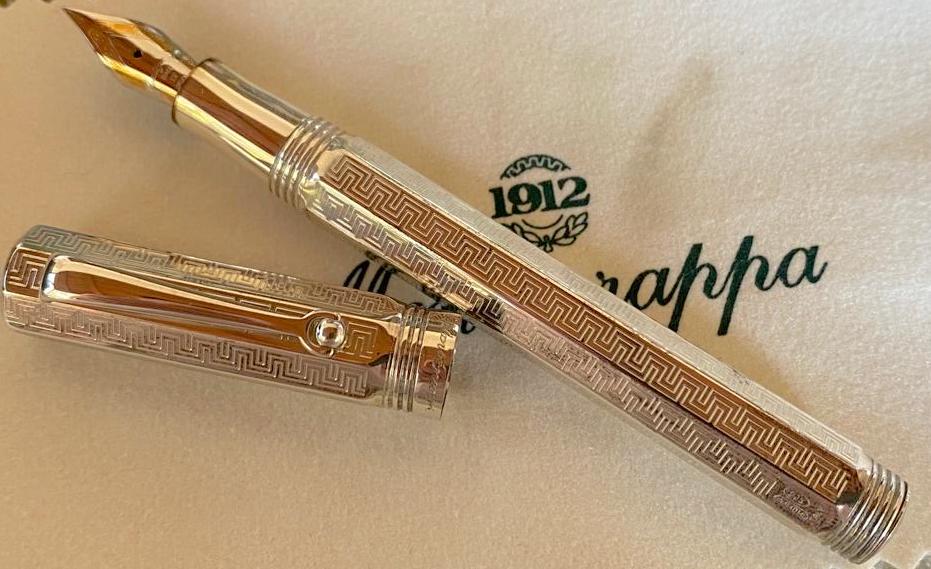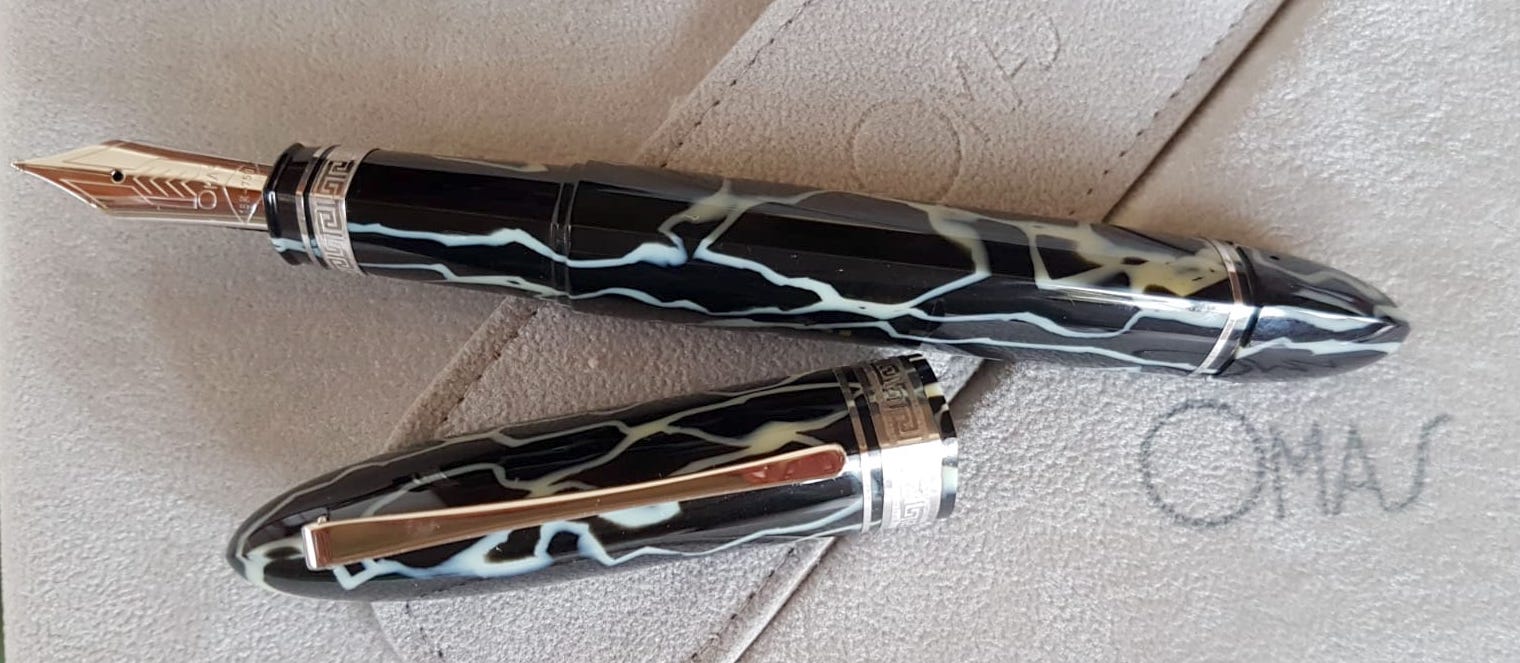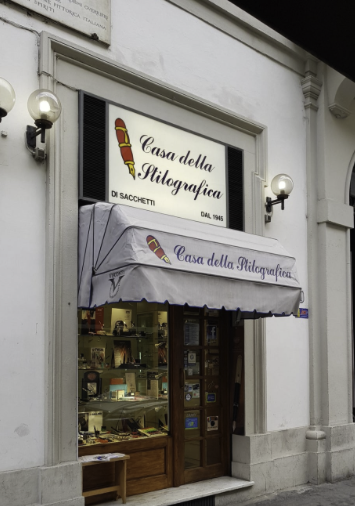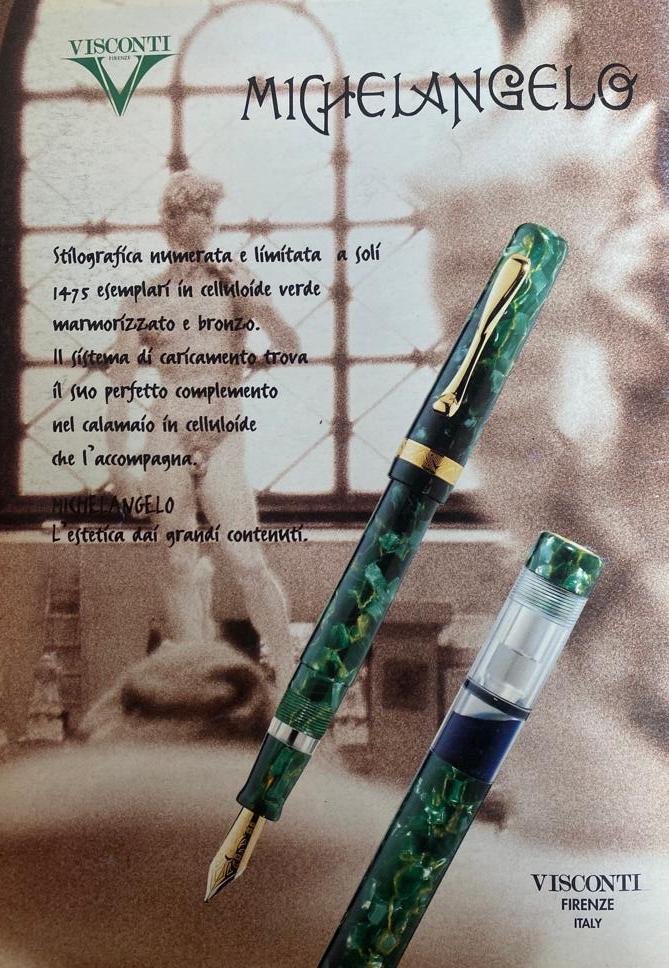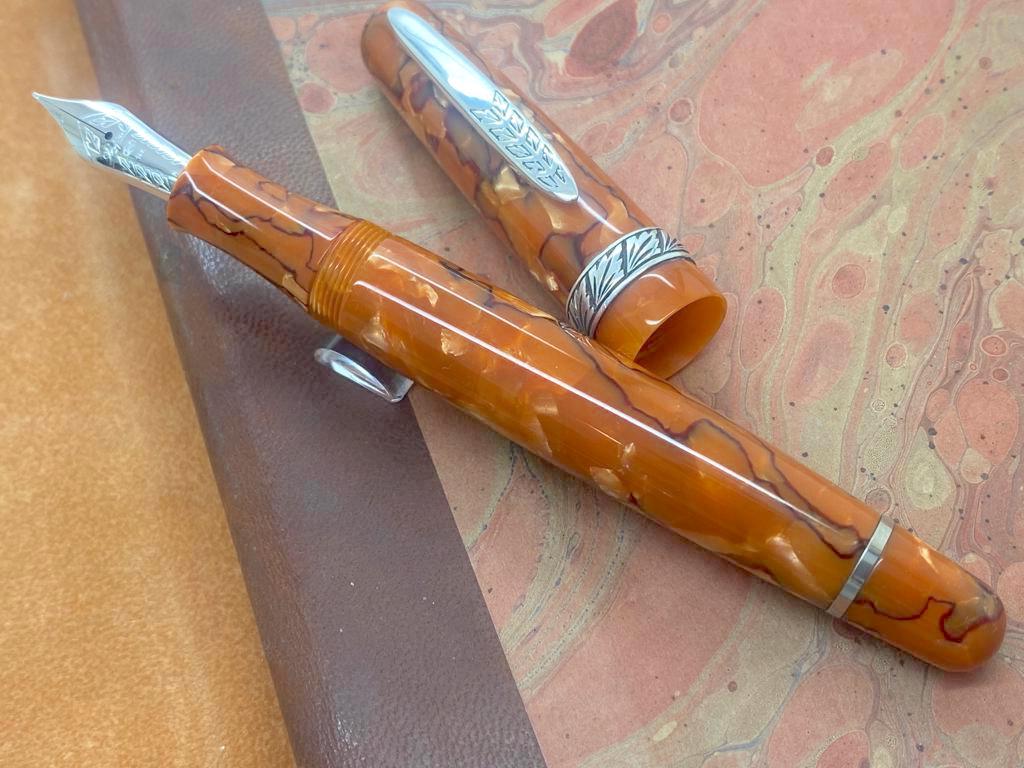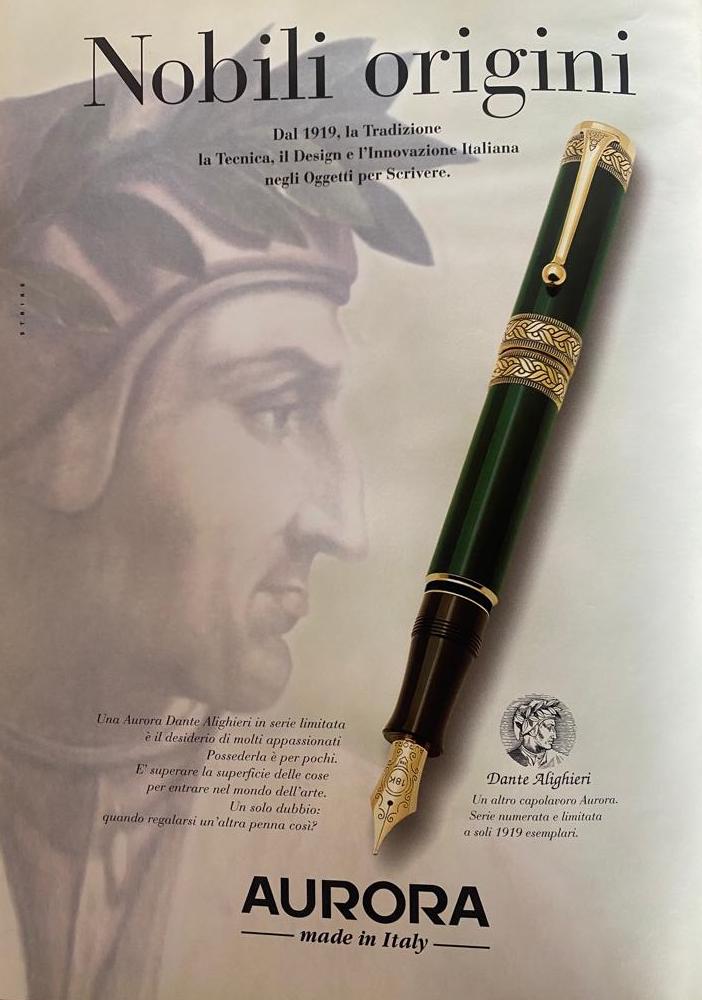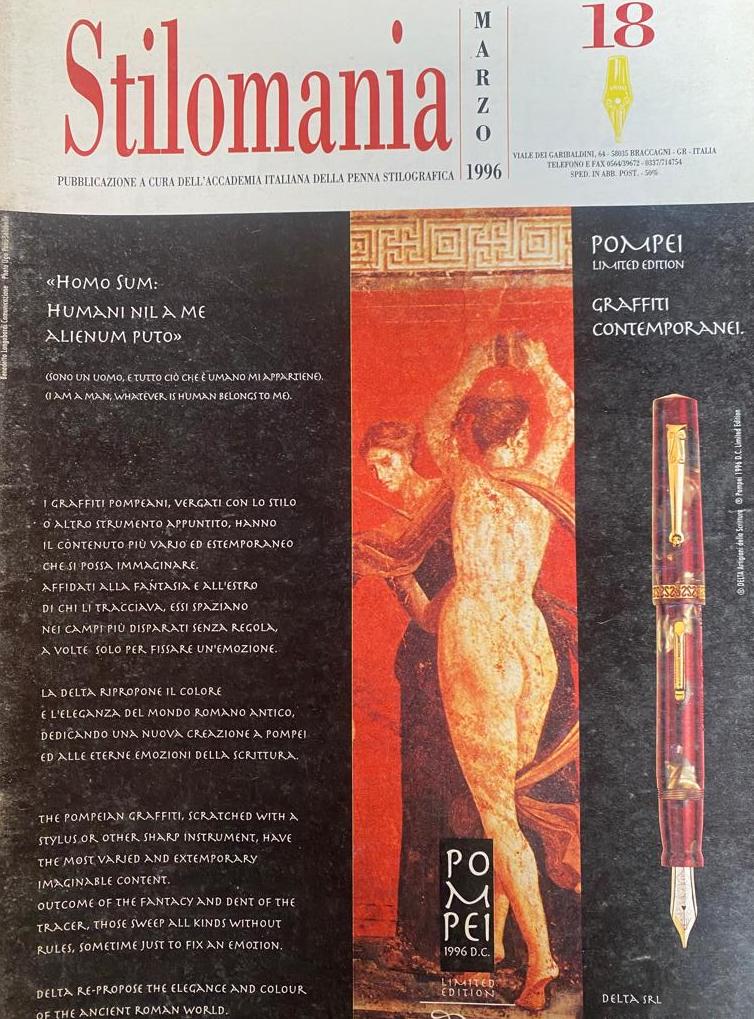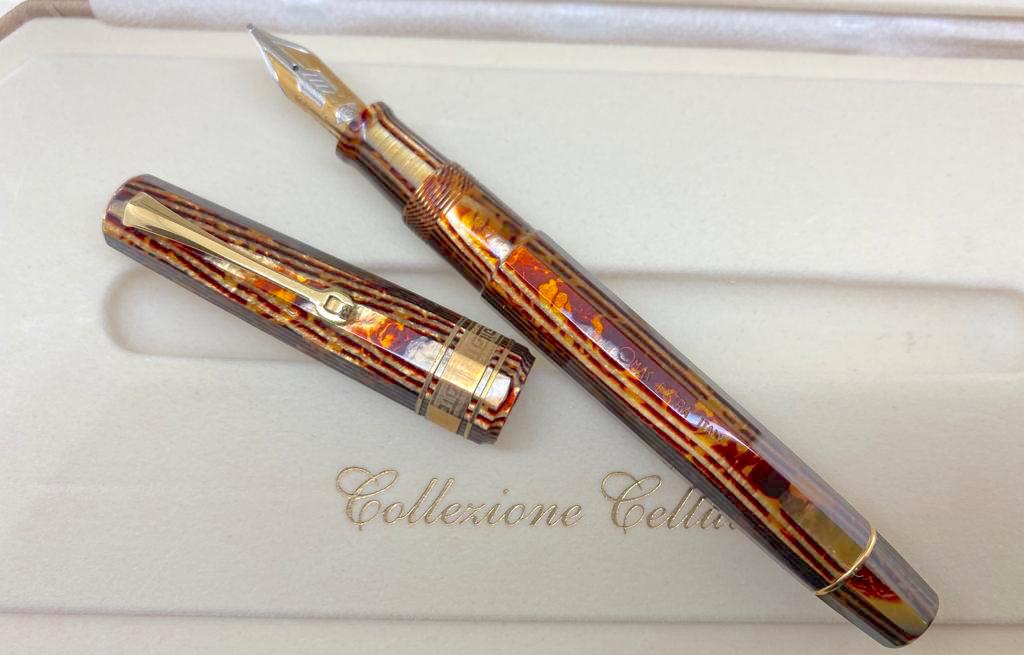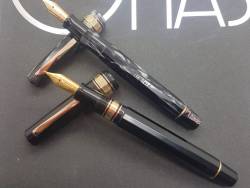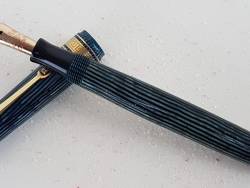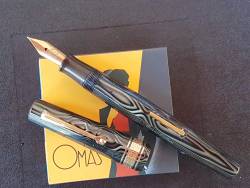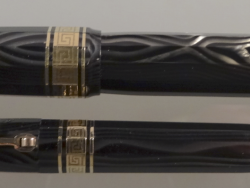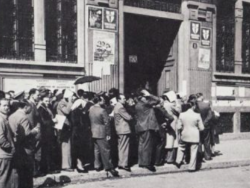THE ROARING 90'S - THE EXCITING DECADE OF PEN PRODUCTION IN ITALY 1990/2000
This text represent the introductory chapter to the book "The Roaring 90's - the Exciting Decade of Pen Production in Italy" which is right now on my drawing board. I used this text for a seminary during the Washington Pen show in August 2023 also to highlight the differences in the way collectors and users approach the world of pens nowadays in comparison to the 1990s.
The main objective of the book will be cataloguing and classifying the huge amount of standard, limited and special editions manufactured by the major Italian companies during this golden decade which definitely represents an extraordinary time in the history of fountain pen production and collecting. The image below the title represents the advertizing poster of the pen show held in Florence in 1992, with the title "Magnificient Fountain Pens" one of the major events of the time which was organized by the former Italian Fountain Pen Academy.
In the early 1980s the world of writing instruments underwent a critical transformation, which definitely changed the standing of fountain pens in particular in the general perception of the public.
From the 1960s till the early 1980s, pens were just writing instruments and fountain pens were not fashionable at all, apart from a very limited, cultivated section of the market. The pens manufactured during of these two decades are mostly metal cylinders, very often with no special features and very little charm. Examples of this kind are, among others, the Montblanc Slim Line, the Noblesse or, for instance the Hastil by Aurora, the Rinascimento and 75th Anniversary by Omas and so on. The list of dull productions (with a few exceptions) is long for every European maker.
The interest in design was very scarce and metal was the most preferred material of the time. Fountain pens had a very limited market; they were just “surviving”.
In the late 1980s the economic situation allowed for a more positive approach and expectations for a bright and ever-growing future were very high. This trend affected Europe as a whole but it was particularly true in Italy. Here the world of fashion and luxury accessories confirmed its leading position and Italian products were appreciated all over the world. The feeling of a prosperous economy seemed to promise a golden future.
Making money on the stock market appeared as an attainable objective for everybody and the thriving economy envisaged success and wealth.
Being rich and successful, having a social position and recognition was a powerful spur for the young. This trend had to be supported with the development of a “social image” which included, among others, the possession of fashionable luxury items. They could be as expensive as vintage or modern cars, down to the smallest personal accessory, such as watches, cufflinks, pens and so on.
The surge in collecting was part of this economic phenomenon.
Montblanc pens soon became sort of “status symbols” and the trend towards special, sophisticated and expensive fountain pens gained gradually momentum.
Collecting isn’t just a whim.
It actually is an Obsessive Compulsive Disorder, which leads a person to continuously buy and pile up items which are not necessary. It can be deeply connected with a sense of guilt and continuous interior struggle between the reason which does not justify the accumulation and multiplication of useless items and the impulsive and hard-to-control desire to keep on buying.
In the 1980s, collecting became a trend where a number of different aspects were entangled.
It started being felt as a “sustainable” way of spending money with the excuse of investment thus opening the door to the serial acquisition of luxury accessories, which were also an essential part of the “image” of a successful person. The”idea” of investment was a deterrent against the sense of guilt and worked instead as a trigger to keep on buying precious and rare items.
The powerful alchemy of collecting irrational forces, the willingness to invest money in precious and luxury items, with the intent to create the “right social image” paved the way for a surge in the interest for writing accessory and fountain pens in particular.
Fountain pens are among the least expensive luxury items. Compared with watches, sports car, paintings and other fanciful luxury collectibles, pens result pretty affordable.
They are affordable and immediately visible and fashionable. They can be worn on the pocket of a jacket, used in the office, ore even become a significative gift. Giving a precious pen as a gift in the 1980s became trendy and it was a very efficient way to express gratitude, recognition or to enhance a request for a favor. In many way, a precious and very expensive pen as a gift was also a very subtle and elegant way to open doors.
The practice of “promotional gifts”is well known all over the world and it made the fortune of many pen companies at the time.
All these aspects combined together, created a fertile ground for an unexperienced growth of the market for expensive writing instruments.
The phenomenon was not only Italian but Italy was the country where it became more significative and had the most interesting results.
The tremendous growth of the market for luxury accessory had a remarkable impact on the productive scene, too. In Italy, more than in any other country, the tradition for luxury, hand-tailored fashion apparel, exclusive jewellery and precious accessories was part of the common culture of well-to-do people. Italy could offer a wide ranging scenario of skilled craftsmen, tailors, jewellers, goldsmiths, silversmiths and quality leather workshops which were largely appreciated all over the world, too.
The trend which had taken shape during the second half of the 1980s, came to completion in the 1990s, even if the economic situation had dramatically changed, with a rocketing public debt and economic stagnation.
The benchmarks of this decade are the fall of the Berlin Wall in 1989 and the introduction of the Euro currency in 1999.
The fall of the Berlin Wall in 1989 deeply changed the face of Europe and triggered a deep transformation of the social, political and economic scenario. Europe could finally move towards an economic and financial aggregation which would lead to the Maastricht Treaty in 1992.
To be admitted as member countries of that Treaty, the countries of the European Economic community had to comply with very strict financial and economic standards. This was a particularly complex task for economically weaker countries, such as Italy, Spain and Portugal and required the implementation of heavy fiscal measures.
In addition, the Schengen Agreement, signed in 1985 by only 5 European countries, had gradually been enlarged to comprise all the EU countries; the abolishment of national borders and the absence of customs duties all over Europe, created a huge free market.
Paradoxically enough, while large industrial groups in Italy had troubles facing inflation, fiscal draw and political instability, medium and small companies of the luxury and fashion district were able to conquer international markets, thus becoming an essential part of the economic scenario.
Notwithstanding continuous scandals and political instability, the general feeling in the first half of the 1990s in Italy still safeguarded a sense of possibility, highlighted by the ascent of personalities such as Silvio Berlusconi who represented the ideal of successful entrepreneurship
In the field of writing instruments these years resulted in a surge of innovation and creativity.
This is mostly due to the ability of small and medium pen companies in Italy to exploit a particular trend of the market and to create fountain pens which were extremely precious and represented a desirable investment, with the added value of high-quality craftsmanship, typical of the Italian tradition.
The trend to transform fountain pens into object of desire and luxurious items which had deep roots in the past and were valuable expression of tradition, was however inaugurated in 1990 by Parker. That year Parker introduced the Duofold Centennial, a special edition to celebrate its most famous model of the 1920s: the Big Red. Pelikan followed in 1991 with the introduction of the Toledo M900, which brought back to life the charme and beauty of the famous Pelikan Toledo of the 1930’s.
In 1989 Omas introduced the first ever limited edition pen, the Amerigo Vespucci in red briarwood; this was the first celebrative limited edition ever, but it remained almost unnoticed at international level as Omas was coming out from a dark era of limited presence on the market.
In 1990, when the World Soccer championship was held in Italy, Omas produced two celebration models which were dubbed “Italia 90”. They were manufactured in green resin (for the general public) and in blue resin (for the VIPs, to be given away as gift and not to be sold in shops).
In 1992 Montblanc introduced the first Patron of Arts limited edition Lorenzo de Medici which replicated the style and design of vintage Montblanc models with sterling hand-etched overlay and in the same year, the first limited edition of the Writers series was introduced: The Hemingway, a modern interpretation of the world-famous Montblanc 139 model.
1992 was a very important year which saw a blooming production of celebration models dedicated to the 500th Anniversary of the discovery of America by Colombo. Almost every pen company in Europe manufactured a special/limited edition dedicated to the event. Aurora had its Colombo trio set, Omas manufactured the Colombo model in facetted briarwood, Visconti had the three Caravels etc.
The time of limited and special editions had begun; ever since every pen company, be it small or large, started offering their own proposal of precious limited edition pens.
That was the beginning of an extraordinary age in Italy which was partially fed by the peculiar Italian economic situation but also connected with the wide ranging European trend which had definitely transformed pens into luxury items where money could be invested and which could be collected.
As a result, the world of fountain pens went through a deep and unprecedented development; a kind of race began towards the research of innovative design coupled with the rescue of traditional materials and designs from the past along with the research of every possible date, event, celebration, anniversary or personality to which a special model could be dedicated.
The market was ready to jump on new ideas, new filing mechanisms, limited editions, special editions, celebrative pens and anything which could stimulate a special interest.
Most of the models which were manufactured during this decade had a definite link with tradition, be it in the use of newly re-discovered materials, such as ebonite and celluloid, be it in the rescue of old designs and style and filling mechanisms; these were rejuvenated, improved, when possible, or studied to create new ideas to be patented.
At the time Google did not exist and books and magazines represented the only way to spread information and knowledge. Pen shops played a major role to offer collectors and aficionados a place to meet, discuss and get informed about the latest limited editions. All the major cities such as Milan, Rome Florence and Naples, experienced a fervid activity of pen shop meetings, discussions, projects and flows of money all around the world of fountain pens.
Milan in particular was the heart of a flourishing pen-related business and pen collecting started spreading like an epidemic virus. Auction Houses began offering specialized auction for fountain pens only as the vigor of the market affected both contemporary pens and the world of vintage.
The trend to bring the past back to life gave birth to the re-discovery of old Italian pen brands, with the production of modern pens which replicated models of the past, as it happened with Tibaldi, Columbus, Ancora and Nettuno.
Visconti, which was founded in 1989, developed a line of limited edition models with traditional flat top design, which were manufactured in vintage celluloid and fitted with rescue vintage steel and glass nibs.
Stipula inaugurated the use of ebonite and applied the art of metal casting of precious models to its most elaborate limited editions.
Montegrappa introduced the Reminiscence model which took inspiration from models with rolled gold overlay of the past and became the basis for the development of many limited editions to come.
Omas revived the tradition of celluloid facetted pens with the Collezione celluloide, introduced in 1991 which finally brought back some color in a scenario of black or burgundy pens.
The reference to the past was not the only trend which developed in Italy at the time; in many cases Italian pen companies hired famous designers and architects with the intent of creating unique fountain pens which could become iconic models for the general public, as it happened for instance for the Model 360 by Omas.
In 1990 in Italy there were as many as 10 pen making companies :
Aurora
Montegrappa
Omas
Visconti
Stipula
Columbus
Delta
Marlen
Ferrari da Varese
Ancora
The number of brands was even higher, as Pineider, Tibaldi and Nettuno pens were manufactured on commission.
VISCONTI
D’essai - (1990)
Caravels ( three colors) (1992)
D’essai Platinum (1994)
Federico II - (1994)
Alhambra ( 1994) red ebonite/silver filigree
Florentia ( 1994)
Le stagioni ( 1994)
Michelangelo ( 1995)
Ponte Vecchio (1995)
Taj Mahal (1996) silver and vermeil ( H.R.H. 1996 ivory and diamonds)
Copernicus ( 1996)
Leopardi (1997)
Titanic ( 1998)
Alhambra (1994)
Her Royal Highness ( Alhambra in black ebonite 22 K gold filigree) (1999)
Voyager demonstrator (1999)
Kaleido (1999)
Visconti also manufactured a number of special/limited editions dedicated to pen shops and local events: Florentia (1994 for the Casa della Stilografica in Florence) 90 Jahre Prantl (1997), Pen Plus (1999), Doerr Becker Quintessez (1998), Duomo di Modena (1999), Pen World Anniversary
The standard production in the 1990s comprised the following lines:
Ragtime, Voyager, Wall Street, Manhattan, Montecarlo.…
STIPULA
Graphite (1993)
Novecento ( 1994)
Melozzo da Forlì (1994)
Silvestro Lega (1995)
Il Dono (1995)
Laurus ( 1997)
Fracesco Baracca ( 1998)
Prometheia(1998)
Virtus Memoriae Odyssei (1999)
Stipula manufactured many pens on commission:
Nettuno: Idra and Superba
Gucci: most Gucci models of the 1980s and 1990s were manufactured by Stipula
Pineider: Hamlet, Juliet, Jubilaeum etc.
Tibaldi: Trasparente (1994) Modello 60 (1996), Iride ( 1997) Impero (1998), Bononia (1999)
Standard production was mainly based on the Etruria model in acrylic and celluloid.
AURORA
Colombo (1992)
Carlo Goldoni (1993)
75th Anniversary (1994)
StiloFetti (1995)
Dante Alighieri (1995)
Cellini (1996)
Sole ( 1996)
Hong Kong (1997)
Giuseppe Verdi (1998)
Italian Flag bicentenary( 1997)
Primavera (1998)
Standard production comprised the Optima model in various colors, the Aurora 88 big in various finishes and various lines of less expensive, everyday writers.
DELTA
Carbon (1994)
Peace (1995)
Colosseum (1996)
Pompei (1996)
Rediscover Pompei (1997)
Gulf of Naples (1997)
Return to China (1997)
Astra (1997)
Dolce Vita (1997)
Lugdunum (1998)
Israel 50 (1998)
Venezia (1998)
Colosseum Demonstrator (1998)
Giulio Cesare (1999)
Segovia(1999)
Verrazzano (1999)
Delta’s standard production comprised the Graffiti line, the D- 365collection, the Activa etc.
OMAS
Amerigo Vespucci (1989)
Italia 90 ( blue and green versions) (1990)
Almirante (1992)
Buffetti (1992)
Colombo II (1992)
Europa (1992)
Crottini (1993)
Galileo Galieli (1993)
Ferrari 348 challenge (1993)
Marconi (1994) - Blue, soldi silver , solid gold
D-Day(1994)
100 ans de la grande lodge de France (1994)
FAO (1995)
The Cinema (1995)
Merveilles du Monde Marco Polo 1995
Jerusalem 3000 (1995)
Ferrari red and yellow (1995)
1000 miglia (1995)
Exotic Wood Legni Pregiati (1996) 14 different woods - Ogiva and facetted designs
Sign of Children collection (1996) - 24 different designs in silver and solid gold
George Washington University (1996)
Serie pittura contemporanea - animali, astratto, mineralogia, serpente - (1996)
Tassili (1996)
Hong Kong (1997)
Fountain Pen hospital (1997)
Triratna (1997)
Israel 50 Jubilee (1998)
Herman Hesse (1998)
Expo 98 ( 1998)
Paragon sigillo Oro (1998)
Roma collection I millennium, II millennium, III millennium (1998) - solid gold and solid silver
Roma Bernini( 1998)
Virgin Delparae Burgi Saroni (1998)
Urbano VIII ( 1999)
Apollo 11 (1999)
Lech Walesa (1999)
Standard production comprised Paragon and Milord models in various finishes then flanked by the Tokyo line and 360s.

